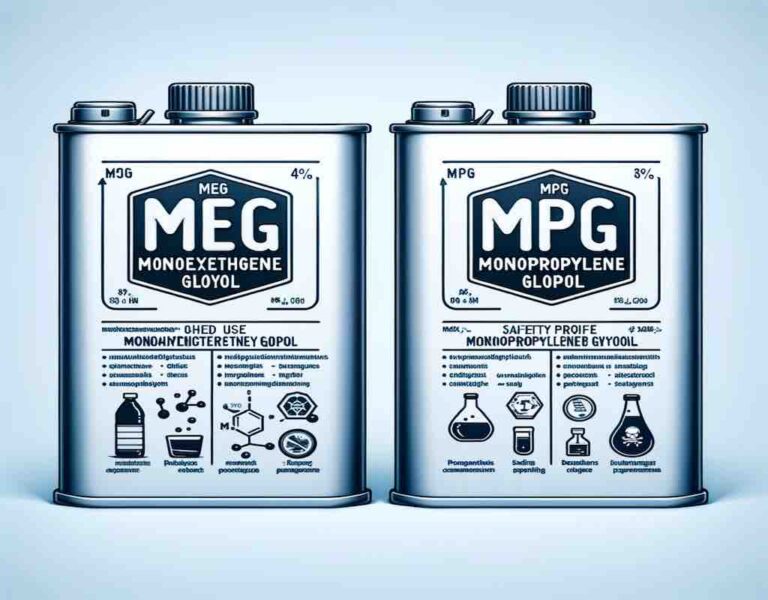Industrial Cleaning 101: Key Principles and Best Practices
Industrial cleaning involves maintaining cleanliness and hygiene in various industrial environments such as factories, warehouses, and production facilities. Unlike residential cleaning, industrial cleaning requires specialized techniques and equipment due to the scale and complexity of the tasks. Clean industrial environments are crucial for ensuring operational efficiency, employee safety, and compliance with regulatory standards.
Two key principles and best practices of industrial cleaning are thorough planning and using modern technology like water jetting blasting or high pressure cleaning techniques. Thorough planning means understanding the specific cleaning needs of the facility, creating a cleaning schedule that doesn’t interrupt daily operations, and having clear procedures for dealing with hazardous materials. This helps ensure everything is cleaned safely and effectively. Using modern technology involves utilizing the latest cleaning equipment and eco-friendly products, which can clean more efficiently and reduce environmental impact. By focusing on these two principles, industrial facilities can stay clean, safe, and efficient.
This guide aims to introduce the fundamental principles and best practices of industrial cleaning. It provides actionable insights to help businesses develop effective cleaning strategies, maintain high standards of cleanliness, and address common challenges in industrial cleaning.
Key Principles of Industrial Cleaning
Understanding the Environment
- Identifying Types of Industrial Environments
- Industrial environments vary widely, including manufacturing plants, distribution centers, and processing facilities. Each type has unique cleaning needs based on the nature of operations and types of contaminants present.
- Assessing Specific Cleaning Needs
- Conduct a thorough assessment to determine the specific cleaning requirements of your environment. Consider factors such as the type of machinery, the volume of foot traffic, and the presence of hazardous materials.
Safety First
- Importance of Safety
- Safety is paramount in industrial cleaning due to the potential hazards involved, such as exposure to chemicals, heavy equipment, and high-risk areas. Proper safety measures protect both cleaning staff and facility operations.
- Overview of Safety Protocols
- Implement safety protocols including proper use of personal protective equipment (PPE), adherence to safety data sheets (SDS) for chemicals, and ensuring all staff are trained in safety procedures.
Regular Maintenance
- Benefits of Regular Cleaning
- Regular cleaning prevents the buildup of contaminants, reduces the risk of equipment malfunctions, and ensures a healthier work environment. It also helps in maintaining the aesthetic appeal of the facility.
- Creating and Following a Cleaning Schedule
- Develop a detailed cleaning schedule that includes daily, weekly, and monthly tasks. This schedule should be tailored to the specific needs of your facility and ensure that all areas are cleaned consistently.
Effective Cleaning Techniques
- Choosing Appropriate Methods
- Select cleaning methods based on the type of surface and the nature of the contaminants. For example, use steam cleaning for deep cleaning, and chemical cleaners for removing grease and grime.
- Understanding Cleaning Agents
- Familiarize yourself with different types of cleaning agents and their applications. Choose agents that are effective for the contaminants you are dealing with and safe for the surfaces and equipment being cleaned.
Best Practices for Industrial Cleaning
Developing a Cleaning Plan
- Steps to Create a Cleaning Plan
- Start by outlining the scope of cleaning tasks, specifying frequencies, and assigning responsibilities. Include details such as cleaning techniques, equipment to be used, and safety measures.
- Defining Roles and Responsibilities
- Clearly define the roles and responsibilities of cleaning staff. Ensure that each team member understands their tasks and the importance of following the cleaning plan.
Selecting the Right Equipment and Supplies
- Essential Cleaning Tools and Equipment
- Invest in high-quality cleaning tools such as industrial vacuums, scrubbers, and high-pressure washers. Ensure that equipment is suitable for the size and type of your facility.
- Criteria for Choosing Cleaning Agents
- Choose cleaning agents based on their effectiveness, safety, and environmental impact. Consider factors such as compatibility with surfaces, ease of use, and potential hazards.
Training and Education
- Importance of Training
- Provide comprehensive training for cleaning staff to ensure they are knowledgeable about cleaning techniques, safety procedures, and the proper use of equipment and chemicals.
- Ongoing Education
- Offer ongoing education to keep staff updated on new cleaning technologies, methods, and safety practices. This helps maintain high standards and adapt to changes in industry practices.
Monitoring and Evaluation
- Methods for Monitoring Effectiveness
- Use checklists, inspections, and feedback from staff to monitor the effectiveness of cleaning operations. Regularly review cleaning results to ensure that standards are being met.
- Conducting Inspections and Audits
- Perform regular inspections and audits to evaluate cleaning practices and identify areas for improvement. Address any issues promptly to maintain cleanliness and compliance.
Environmental and Regulatory Considerations
Environmental Impact
- Importance of Eco-Friendly Solutions
- Using eco-friendly cleaning solutions helps reduce the environmental footprint of cleaning activities. These solutions are designed to be less harmful to ecosystems and human health, promoting a more sustainable approach to cleaning.
- Best Practices for Waste Management
- Implement best practices for managing waste generated during cleaning, such as using recycling programs, properly disposing of hazardous waste, and minimizing chemical runoff. These practices help reduce environmental impact and comply with environmental regulations.
Regulatory Compliance
- Overview of Relevant Regulations
- Industrial cleaning is subject to various health and safety regulations, depending on the industry. These regulations may include standards for chemical use, waste disposal, and overall workplace safety. Familiarize yourself with the regulations specific to your industry to ensure compliance.
- Ensuring Compliance with Standards
- Regularly review and update cleaning procedures to align with current regulatory requirements. Conduct internal audits and seek guidance from regulatory experts to ensure that all aspects of your cleaning operations are compliant with applicable standards.
Case Studies and Examples of our Successful Cleaning Programs
Case Study 1: Heat Exchanger Tube Flushing and Bundle Cleaning
Background: A large chemical manufacturing plant was experiencing reduced efficiency due to fouled heat exchanger tubes. Regular cleaning methods were insufficient to restore optimal performance.
Solution: The plant engaged an industrial cleaning service provider specializing in heat exchanger maintenance. The provider used high-pressure water jetting to flush the tubes and clean the bundle effectively.
Outcome: The cleaning program resulted in a significant improvement in heat transfer efficiency, reduced energy consumption, and extended the lifespan of the heat exchangers. The plant also reported fewer unplanned shutdowns and lower maintenance costs.
Key Principles and Best Practices:
- Use of high-pressure water jetting for thorough cleaning
- Regular maintenance schedules to prevent severe fouling
- Training of personnel in handling specialized equipment
Case Study 2: Hydroblasting of Pressure Vessel and Inspection Services
Background: A petroleum refinery needed to clean its pressure vessels to comply with safety regulations and ensure efficient operation. The vessels were contaminated with heavy residues that could not be removed through standard cleaning methods.
Solution: The refinery hired an industrial cleaning service that employed hydroblasting techniques to clean the pressure vessels. Additionally, the service included detailed inspection services to identify potential issues.
Outcome: The hydroblasting removed all contaminants, restoring the vessels to optimal operating condition. The inspection services identified areas needing repair, preventing future problems and ensuring compliance with safety standards.
Key Principles and Best Practices:
- Application of hydroblasting for effective residue removal
- Comprehensive inspection to identify and address potential issues
- Adherence to safety and regulatory standards
Case Study 3: Cleaning of Coil Tubing Package
Background: An oilfield services company needed to clean its coil tubing package, which was heavily contaminated with drilling mud and other residues. Efficient cleaning was essential to maintain the equipment’s performance and longevity.
Solution: The company partnered with an industrial cleaning provider that used specialized chemical cleaning agents and high-pressure washing to clean the coil tubing package.
Outcome: The cleaning program restored the coil tubing package to near-original condition, improving its performance and reliability. The company also reported fewer equipment failures and reduced maintenance costs.
Key Principles and Best Practices:
- Use of appropriate chemical cleaning agents for effective residue removal
- High-pressure washing to reach and clean all areas of the equipment
- Regular maintenance to prevent severe contamination
Innovative Cleaning Solutions
- New Technologies and Methods
- Explore innovative cleaning solutions such as advanced cleaning robots, automated systems, and eco-friendly cleaning technologies. These innovations can improve efficiency, reduce labor costs, and enhance the overall effectiveness of cleaning operations.
- Implementation of Innovations
- Assess the benefits and feasibility of adopting new industrial cleaning technologies in your facility. Consider factors such as cost, training requirements, and potential improvements in cleaning performance.
Additional Resources
Understanding the Importance of Cleanliness in Industrial Environments
How to Choose the Right Industrial Cleaning Service Provider
Top 5 Benefits of Professional Industrial Cleaning Services
Guides and Checklists
- Detailed Cleaning Guides
- Access comprehensive guides that cover various aspects of industrial cleaning, including task-specific procedures, safety protocols, and equipment maintenance.
- Cleaning Checklists
- Utilize checklists to ensure that all cleaning tasks are completed consistently and thoroughly. These checklists can help track progress and maintain high standards.
FAQs
- What are the key components of an effective industrial cleaning plan?
- An effective industrial cleaning plan includes a detailed scope of tasks, a schedule of cleaning frequencies, defined roles and responsibilities, and specific cleaning techniques and equipment.
- How often should industrial facilities be cleaned?
- The frequency of cleaning depends on the type of facility and its operations. A well-structured plan typically includes daily, weekly, and monthly cleaning tasks to maintain cleanliness and prevent buildup.
- What are the benefits of using eco-friendly cleaning solutions?
- Eco-friendly cleaning solutions reduce environmental impact, improve air quality, and promote a healthier workplace. They are also often less harmful to employees and more sustainable.
- How can businesses ensure compliance with cleaning regulations?
- Businesses can ensure compliance by staying informed about relevant regulations, conducting regular internal audits, providing staff training, and consulting with regulatory experts.
- What are some innovative cleaning technologies to consider?
- Innovative cleaning technologies include robotic cleaners, automated scrubbing systems, and advanced filtration methods. These technologies can enhance cleaning efficiency and reduce labor costs.
Conclusion
Effective industrial cleaning involves understanding your environment, prioritizing safety, maintaining a regular cleaning schedule, using appropriate cleaning techniques, and addressing environmental and regulatory considerations. Implementing best practices such as developing a comprehensive cleaning plan, selecting the right equipment, and providing ongoing staff training can lead to a cleaner, safer, and more efficient workplace.
Adopting these key principles and best practices is essential for achieving high standards of cleanliness in industrial settings. By investing in effective cleaning strategies and staying informed about new technologies and regulations, businesses can ensure a safer and more productive environment.
For more information and expert assistance in industrial cleaning, contact us, our experienced team is ready to help you implement effective cleaning practices and maintain a clean and safe industrial environment.


